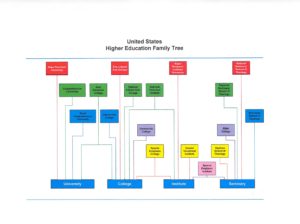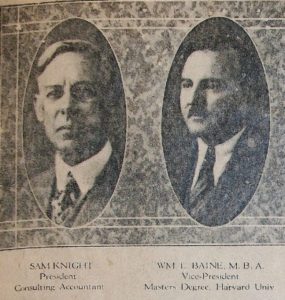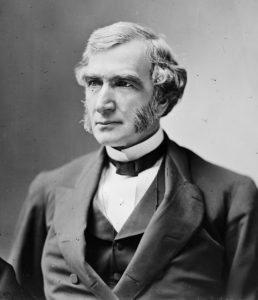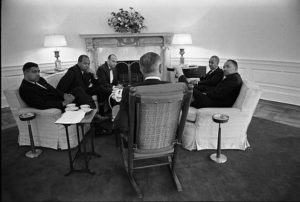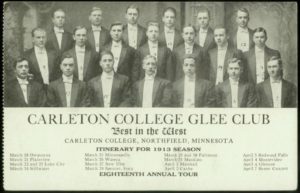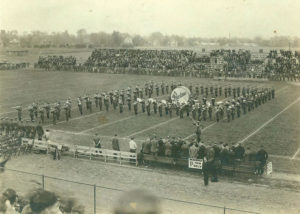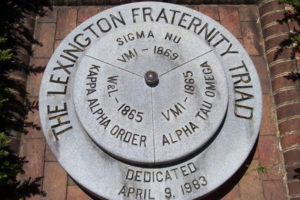
In spite of the high hopes and great expectations of many in American Higher Education, the end of the 20th century and the beginning of a new millennium brought little relief to the beleaguered systems of AHE. In my previous post The First Age of Disruption in American Higher Education we left American higher education in a precarious situation. It was buried under numerous train wrecks brought on by many training storms or crises. Unfortunately, the incessant crises have not stopped during the first two decades of the 21st century. Not only have they continue unabated, but the frequency of their occurrences has also increased.

Instead of the period of recovery hoped for by the academy, the new millennium brought an unrelenting season of storms and turmoil to American Higher Education. A cursory examination of the reports and articles out of the general public and higher education media outlets during these first two decades of the 21st century yields an abundance of fuel for the argument that American Higher Education remains in deep trouble.

The following list highlights some of the various crises that have made headlines in the 21st century. I have labeled many of them using academic code words. The task of explaining all the academic jargon associated with these code words would fill a book which I may write (Just what I need another writing project! – Is there anyone out who wants to help me?). In the meantime, to bring the project within manageable limits for this blog, I will provide a reasonably short synopsis of my take on each crisis and its immediate effects on AHE in separate posts which will follow.

For those too anxious to wait for my follow up, I am providing an example of a commentator or the media’s interpretation of the crisis. The list is in chronological order according to the appearance of the media article that I reference. I have chosen to list the topics in this manner to show the rapidity and pervasiveness of crises in higher education which were occurring during these two decades.

The particular article I have selected may not necessarily be the first time the topic is addressed in public. However, I believe the articles selected are repesentative examples of the treatment which the topic has received. In some cases, the article referenced reflects my views on the topic. In other cases, it doesn’t. I will reserve my comments until I have the time and space to more fully explicate them.
- Adjunctification of the faculty threatens academic quality across all of AHE is a theme that began appearing in higher education circles in the 1980s. It has exploded with much force in the new millennium. Gabriela Montell begins her December 15, 2000 article A Forecast of the Job Market in English in The Chronicle of Higher Education with the conflicting statement: “It would be an overstatement to say the job market for faculty members in English is booming, but scholars have reason to be mildly optimistic…” Later in the article, defining the term adjunctification, she notes that “Many professors also say they are concerned about universities’ reliance on part-time and temporary faculty members…the great worry…is adjunctification, which could keep students from getting the proper tenure-track jobs they clearly deserve.”
- Faculty Reward Systems and Faculty Priorities are subjects of internal and external heated debates. Three researchers, Cathy A. Trower, Ann E. Austin, and Mary Deane Sorcinelli, collaborated in the study Paradise Lost: How the academy converts enthusiastic recruits into early-career doubters. This paper “captures the sense of dreams deferred as well as the tension between ideals and reality that young scholars face as they move through graduate school and into faculty posts … if they move into faculty posts.” It appears in the May 2001 issue of the AAHE Bulletin.
- The Academic Lattice is the seemingly constant expansion of administrative support structure to handle tasks and duties seen by many as not directly related to teaching and learning. It is very frequently blamed for unneeded increased costs. This phenomenon is often derogatorily called “administrative bloat”. The study The Cost of Prestige: Do New Research I Universities Incur Higher Administrative Costs? by Christopher C. Morphew and Bruce D. Baker seems to say it does apply to some institutions. However, it leaves the question open for others. The paper appeared in the Spring 2004 issue of Review of Higher Education, Volume 27, Number 3.
- Basic questions concerning College Admissions which have been around for hundreds of years remain tauntingly unanswered: “Who should go to college?” “How should a college decide to whom they offer admission?” Ross Douthat addresses one particularly sticky question in his article Does Meritocracy Work? His article concerns the fierce competition among prospective students to gain entrance into elite institutions, and the extensive pressure on elite institutions to enroll a more diverse student population. The article appears in the November 2005 issue of The Atlantic.
- Since the Reagan tax revolution, many public higher education officials and commentators have debated the issue of whether the privatization of the academy threatens public higher education. In 2005 Ronald G. Ehrenberg, director of the Cornell Higher Education Research Institute, published the white paper The Perfect Storm and the Privatization of Public Higher Education, a version of which appeared in the November 2005 issue of Change Magazine. Ehrenberg argued that the privatization of public higher education and the shrinkage of public support threatened to do irreparable damage to public higher education. In a November 2009 blog post Reality Check: The Privatization of Public Higher Education, Travis Reindl partially rebuffs the Ehrenberg arguments. In the decade since Reindl’s post, public support of public higher education in terms of government funds have continued to decline. So where are we?
- Sweeping demographic changes are altering the face of AHE. These changes began in the last half of the 20th century with the entrance of women and some minority students into our colleges and universities. However, they have picked up steam heading into the new millennium. Rob Jenkins sketched the new “traditional student” in his October 2012 article The New ‘Traditional Student’ in The Chronicle of Higher Education. This new student is married, living at home, and working. Within a few years, the majority of students will be over 25 years of age and a person of color.
- Scandal after scandal rocks AHE and drags its reputation through the mud. Prior to the dawn of the new millennium, AHE was not immune from scandalous activities. However, as social media access has accelerated the news cycle, information about scandals has become more available, more quickly. A Google search for “college scandals” took less than 1 second to produce over 75 million results. One of those results was a Harvard Business School Working Paper The Impact of Campus Scandals on College Applications, which was published in 2016. The abstract of this study by Michael Luca, Patrick Rooney, and Jonathan Smith begins with the provocative statement: “In recent years, there have been a number of high profile scandals on college campuses, ranging from cheating to hazing to rape.” In their paper, the authors attempted to answer the question “With so much information regarding a college’s academic and non-academic attributes available to students, how do these scandals affect their applications?” The authors looked at the top 100 American universities ranked in the 2015 U.S. News and World Report, “Best Colleges.” They then constructed a database of reported scandals on these campuses between 2001 and 2013. They found that during these dozen years, 75% of the top American universities reported at least one major incident. Since their databased cut off in 2013, they didn’t include recent major scandals including the Michigan State gymnastics incident (2014), the Baylor football scandal (2016), University of North Caroline cheating scandal (2017), the fraternity hazing death of Timothy Piazza at Penn State (2017), the Ohio State sexual abuse scandal (2019), and the Varsity Blues Admissions fiasco (2019). It also doesn’t include the Louisville basketball scandal (2017), Temple falsification of USNWR data (2018), or the implosion and collapse of ITT (2016) since these schools were not in the top 100 universities on the USNWR rankings.
- Are athletics taking over the academy? Many including Richard Vedder, the director of the Center for College Affordability and Productivity, think so. He presents some ammunition for his opinion in the op-ed piece Athletic arms race hurts academics, which appeared in the December 31, 2013, edition of the Omaha World-Herald.
- The Academic Ratchet tightens its grip on AHE. The automatic response of many within the academy to solve every budget or enrollment deficit is to seek new students via the addition of new programs and faculty, or an increased effort by the admission, recruitment, and fundraising offices. “To solve our problems all we need to do is rachet up our efforts, programming or personnel.” The obvious problem with this solution is that for most institutions it just doesn’t work. There aren’t enough funds, faculty, and students to satisfy all of AHE. In addition, institutional personnel doesn’t have the time nor expertise to do all of the necessary work. To help alleviate the academic rachet problem, in the late 1990s Robert C. Dickeson developed a process he called Program Prioritization. He outlined it in a 1994 book which was later updated in 2010. It is titled Prioritizing Academic Programs and Services: Reallocating Resources to Achieve Strategic Balance, 2nd edition. Over the next 25 years since Dickeson’s process was first released, more than 500 institutions attempted program prioritization. Some were successful in achieving a strategic balance. Many were not. In January 2014, Alex Usher, a consultant with Higher Education Strategy Associates, wrote a blog post Better Thinking About Program Prioritization critiquing the Dickeson plan.
- As Academic Arms Races heat up in all segments of AHE, the burning question is “What is the price of prestige?” Kevin Iglesia attempted to answer that question in his 2014 Seton Hall University dissertation The Price of Presitge: A Study of the Impact of Striving Behavior on the Expenditure Patterns of American Colleges and Universities.
- The question: “Is virtual teaching a replacement for the traditional classroom?“ has perplexed higher education since the University of Illinois created an Intranet for its students in 1960. It was a system of linked computer terminals where students could access course materials as well as listen to recorded lectures. It evolved in the PLATO (Programmed Logic for Automatic Teaching Operations) system which at its height was operating on thousands of computers all over the world. By the time we entered the new millennium, millions of students were not only using computer-aided instruction for supplemental course work, but they were also taking entire courses and even degree programs online. Faculty members and universities were asking the question of whether these students were getting a quality education. Along the way, faculty began to worry about whether they were becoming viewed as superfluous. Universities became concerned about whether their brick-and-mortar palaces would be ghost towns replaced by a new costly virtual infrastructure. In a June 23, 2018, blog posted on the eLearning Industry website, Allistair Gross asked the direct question Is Virtual Teaching A Major Threat To Teachers?

Having reached 10 crises and running out of room in this post, I have decided to save another 10 crises for a Part II of A New Millennium – Same Old Story. Tune in next week for more troubles, calamities, cataclysms, emergencies, and disasters in 21st century American higher education.
